How we define EmailOctopus as a brand
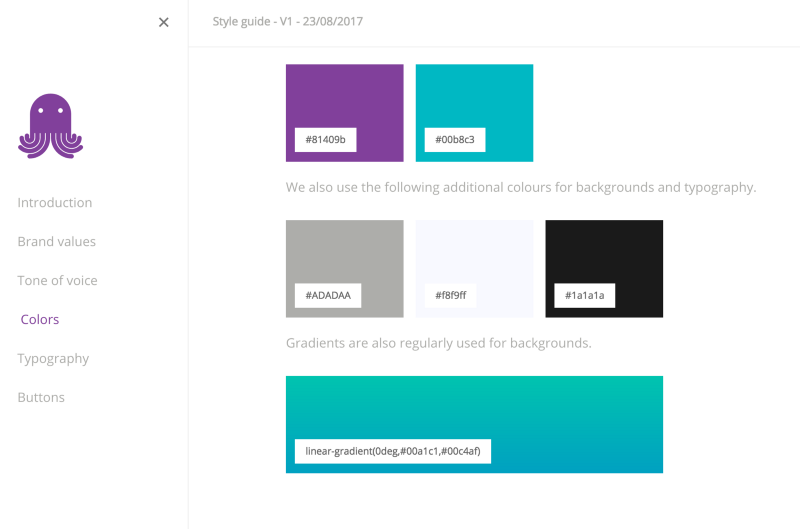
When we wrote the first line of code, 4 years ago, for what would be EmailOctopus, we didn’t expect to be where we are today with thousands of customers having sent over 1.6bn emails. Unlike traditional businesses, web startups often don’t build a business plan or invite the mayor to cut the red tape at a grand unveiling. They grow and iterate — often without defining who they are as a brand, where they’d like to be or why they’re even in business.

At EmailOctopus, we had an abstract idea of a brand and a common, vague goal. But we’d never really discussed it as a team and we’d certainly never written it down. As we re-design the site and write even more blog posts, a common understanding of who we were and who we wanted to be was more important than ever.
Now a team of 5, it felt like the right time to really work out what EmailOctopus stands for and we did that using the following process on a team away day. The day, featuring a morning of serious brand chat, a few friendly games of darts and a few drinks after took place last week. Here’s how it went, and how it looked like.
The brand meeting
We started the day with an all-hands meeting, discussing where the business was and our short term roadmap. As you may have guessed by the term all-hands, everyone attends — from our Marketing Intern, Hamzah, up to co-founder Gareth who takes a more advisory role to the business.
We do our all-hands meetings every month. Doing so ensures everyone is on the same page and understands our short term objectives. Internally we’re very open with the whole team about our performance — metrics such as MRR (Monthly Recurring Revenue) and accounts acquired are shared regularly through Slack updates. The all-hands meeting gives an opportunity to answer any deeper questions that the team may have, in this meeting for example we prepared analysis breaking down all our user behaviour on site — giving the team insight into which features are being used, how regularly users are using the platform and what types of users are using EmailOctopus. By sharing these insights it allows the whole team to have significant input over the coming month into the work we’re doing.
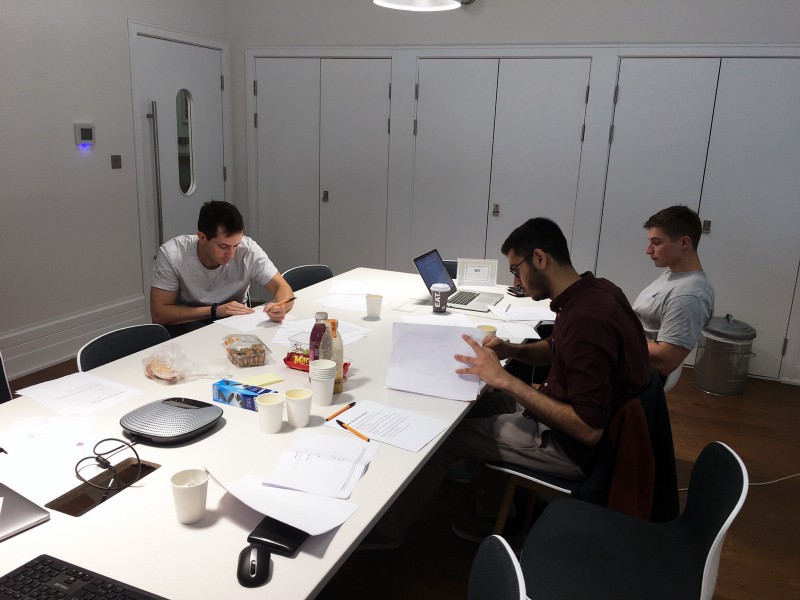
With the all-hands discussion done, we moved into the discussion around the EmailOctopus. We’re big fans of the GV Sprint process and we used their Brand Sprint to add some structure to our brand discussions. As per the brand sprint guidelines, we designated a decider (Jonathan), facilitator (Tom) and picture taker (Hamzah).
10 year roadmap
This is where we look at where we see EmailOctopus being in 10 years time. Regularly we look 6 months or a year ahead, so taking some time out to think and visualise where we could be in 10 years time was an interesting exercise.
After each writing down our own vision at intervals of 1, 2, 5, and 10 years we discussed them. Our short term, 1 and 2 year aims were all very similar. Tripling the number of customers, adding additional features, and expanding into other similar areas, such as SMS or Facebook Messenger Marketing. Not a huge surprise because we regularly talk about the short-term objectives.
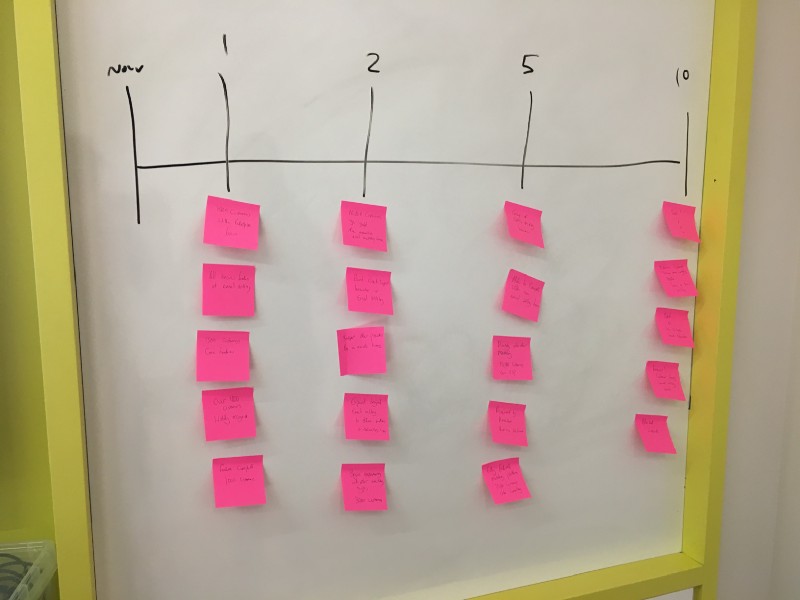
At 5 and 10 years, however, our visions became slightly different. Some expecting to sell the business with others wanting domination of the email marketing industry. We spent a good 15 minutes discussing where we thought we could be, before Jonathan made the final decision.
What, How, why
The What, How, Why is based on Simon Sinek’s “Golden Circle”. You can watch his video here, explaining the concept. But in short, Sinek argues that you need to know why you’re in business (and talk about it). Apple are the best example of this with their why mantra of “We believe in challenging the status quo and doing this differently.” In short, when a company has a strong motivation, customers buy the product.
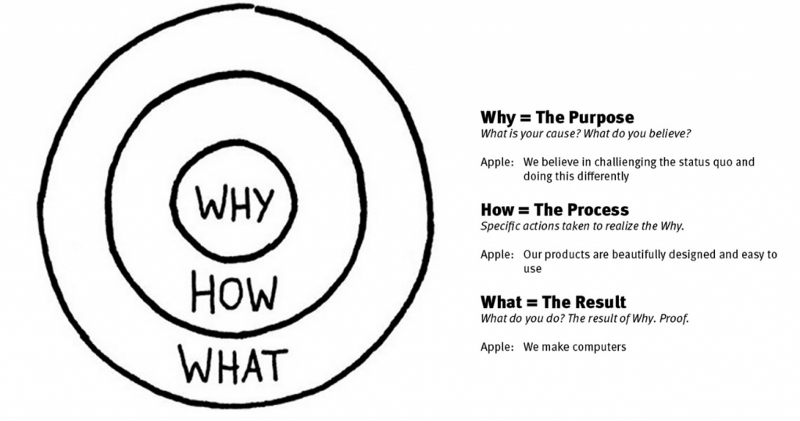
The most important part of this exercise was the Why part. The What and How are just how you are solving your bigger question at the present time. With that in mind, we all wrote down our answers, stuck them up on the board and then spent around 10 minutes discussing the What and Hows around EmailOctopus.
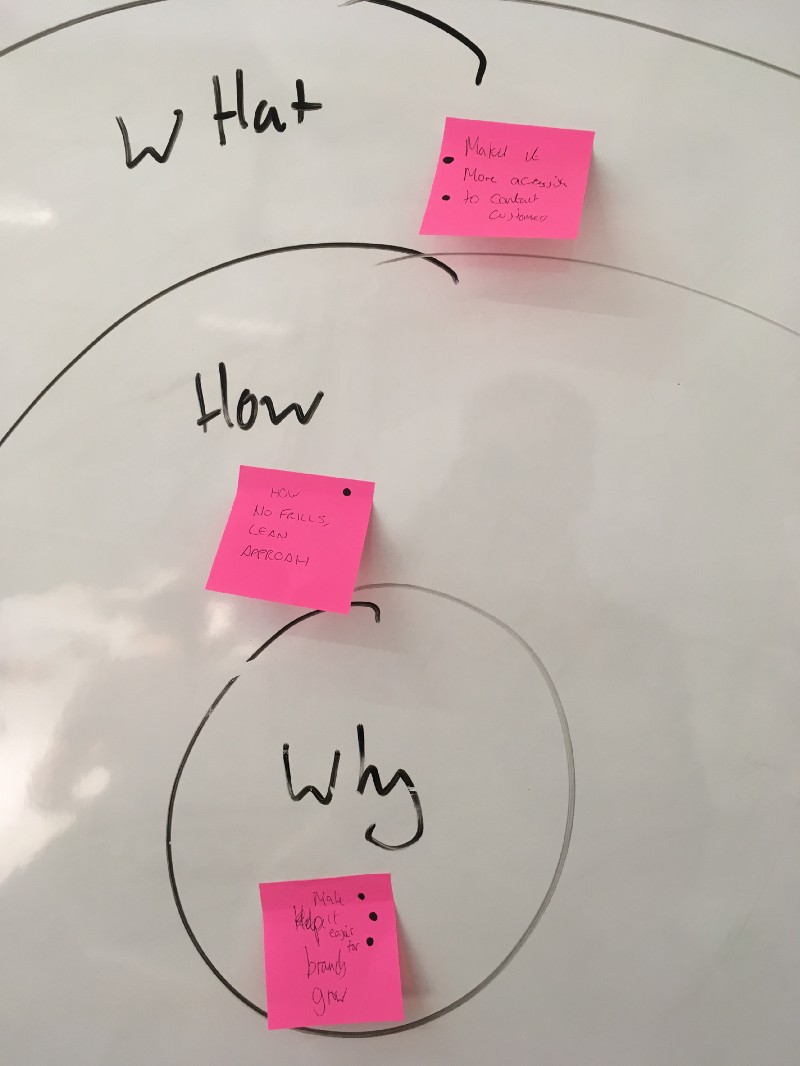
When we got to the ‘Why’ we spent a little longer. Discussing each persons idea in detail to understand what motivates each of us at EmailOctopus. After a frank discussion, we ended up taking a combination of two tickets. Deciding that at EmailOctopus, we exist to “Make it easier for brands to grow” which at present we do through a “No frills, lean approach” to sending emails.
Top three values
Brand values have always felt a little corporate. Something a Fortune 500 company sticks up on the wall, forever to ignore. There is some importance to values, however. It adds colour to the “Why” and can help dictate our approach in many different situations; when hiring, when dealing with customers or dealing with internal conflict.
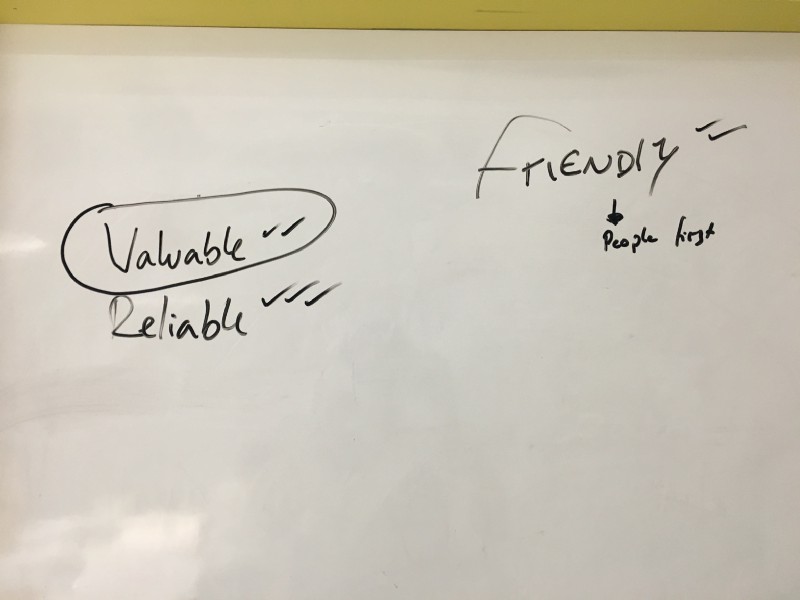
Again, we wrote down our individual values and put 3 each up on a whiteboard. With a list of around 15, we set about discussing them before Jonathan made the final decision on what would be the final values. The decider in all these excercises plays a key role — whilst in our case Jonathan took into account everyone’s opinion, it was important not to over discuss many of the points. The sprint falls down if we spend hours discussing each and every point — after all a camel is a horse designed by committee. Having one decider speeds up the process significantly and ensures our conflicting opinions don’t get too out of hand. Here are the values we decided on and now take into account everyday at EmailOctopus.
- We offer value
- We are reliable
- We are friendly
Top three audiences
This required that we analyse what groups are most important to EmailOctopus. As an email marketing platform, we really are used by a wide spectrum of individuals — from individual bloggers all the way through to huge multinational record labels. This exercise we broke down whose opinion matter most to EmailOctopus — again we noted down each of our own answers before voting (and deciding) on our Top 3.
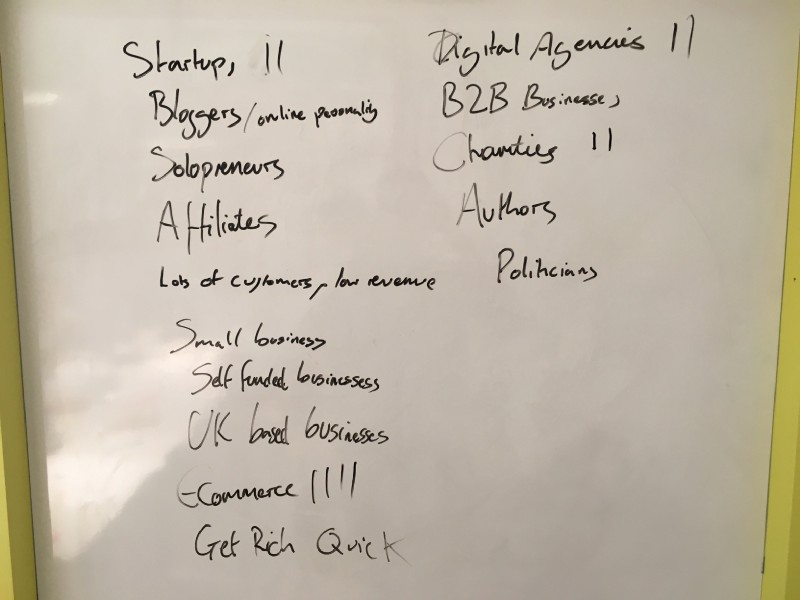
The final two exercises were more traditional branding exercises. If you’ve ever worked with a branding consultant, you’ve probably done something similar. First up we had to map out the EmailOctopus personality on ‘personality sliders’. We looked at a number of extreme personalities we could associate with our brand: Elite/Mass Appeal, Serious/Playful, Conventional/Rebel, Friend/Authority, Mature & Classic/ Young & Innovative. We again noted and voted — fortunately in this case we found we all felt very similar about where we sat on the scale wanting to be significantly more fun, disruptive and playful than a Chanel type brand. Positioning ourselves similarly to Google.

The last exercise was a 2×2 matrix, where we mapped ourselves amongst competitors such as Mailchimp, Constant Contact and Campaign Monitor. The matrix had 2 axis — Modern-Classic, Experessive-Reserved and we set about mapping where EmailOctopus sit alongside the other aforementioned brands. Despite some disagreement regarding where our competitors stood on the chart, we were all in agreement of EmailOctopus’ position.
Finishing up
With the meetings out of the way, next up was some team building. Nothing brings a group together better than some drinks, food and darts. So we headed just around the corner, to Flight Club. This will be remembered as the day we discovered Tom’s hidden talent, darts.
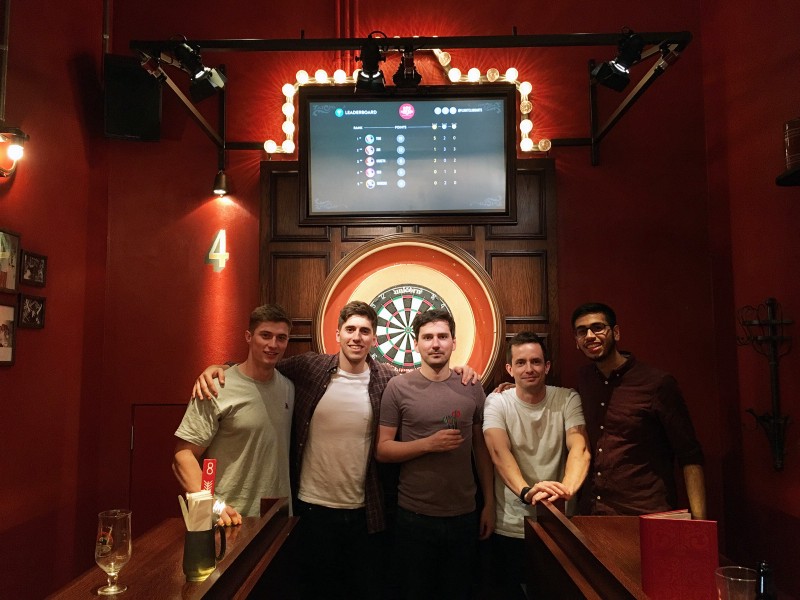
Want to run your own brand sprint?
Is your startup growing or about to undergo a huge redesign? As scary as it may sound, I couldn’t recommend more the importance of defining your values and common goal. We used the following Medium post as the basis for our day, making a few minor tweaks to suit us better.
https://library.gv.com/the-three-hour-brand-sprint-3ccabf4b768a
The sprint in total took just shy of 3 hours, which we did in an external meeting room (at Huckletree Shoreditch) outside of the office. Doing it outside of our own regular place of work gave the team some time to really switch off from day-to-day tasks and focus on the bigger picture.
Originally published at blog.emailoctopus.com